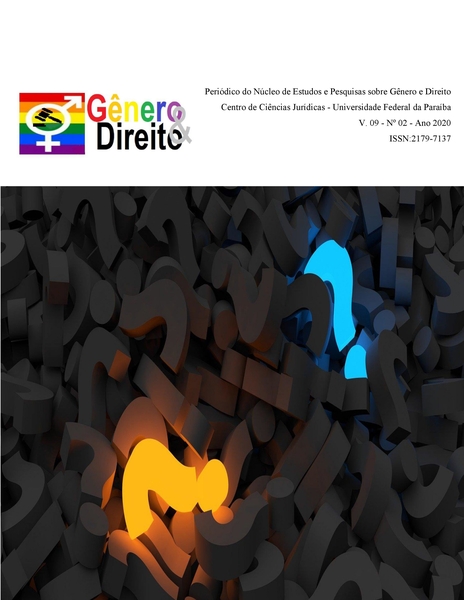VALUE ENGINEERING IN CULTURAL HERITAGE
DOI:
https://doi.org/10.22478/ufpb.2179-7137.2020v9n2.50830Palavras-chave:
Ancient, Conservation of Historical Monuments, Originality, Value, Value EngineeringResumo
The diversity of damaging and destructive factors in ancient sites highlights the importance of discussing the conservation interventions.Therefore,the value is expressed in line with physical health, andtaking into account the integrity and conservation of the intrinsic identity of each monument based on its originality in interaction with the environment. Therefore, focusing on value-based planning and technical review of the project, attempts have been made to explain and eliminate the ambiguity in the similarity of these two, and to create incentives for the application of value engineering by professionals at all levels of planning.This study attempts to study the meaning of value based on the reading of components and its semantic subsections in the field of conservation, and recognize the factors that influence the change of value perspective in the communities,in fundamental-theoretical method and based on the descriptive nature.
Downloads
Referências
Talebian M. H. (2005), The Concept of Authenticity in The Conservation of World Heritage, Ph.D. Thesis, University of Tehran, 54
Hojjat M. (2001), Cultural Heritage in Iran (Politics for an Islamic State), First Edition, Cultural Heritage Publishing House, Tehran, 25
MojabiSeyyed M. (2010), Improvement, Rehabilitation and Restoration of Meybod Neighborhood, Master's Thesis, Isfahan Art University, 273
L.D.Miles, Technique Of Value Analysis & Engineering, McGraw-hill, New York, 1961
Brien, J.O, Value Analysis in Design & Construction, McGraw-Hill, New York,1976.
Albertz, H & Hazen, H (2010), Maintaning authenticity and integrityat cultural world heritage sites,American Geographical Socitey of NewYork, Vol. 100, No.1, pp 35- 48.
Avrami, E; Mason, R & De La Torre, M (2000), Values and Heritage Conservation, Getty Conservation Institute, Los Angeles.
Caple, C (2004), Conservation Skills: Judgment, Method and Decision Making, Routledge, New York.
Croce, N (1990), The aesthetics were further develop in Italy, Icomos Publication, Italy.
De La Torre, M (2002), Assessing the Values of Cultural Heritage,Getty Conservation Institute Publication, Los Angeles.
English Heritage (2008), Conservation principles: policies and guidance for the sustainable management of Historic Environment, English heritage, London.
Guidance on the Proparation of Retrospective Statement of Outstanding Universal Value for World Heritage Properties (2010).
Hazen, H (2009), Valuing natural heritage: park visitors’ values related to World Heritage sites in the USA, Current Issues in Tourism, Vol. 12, No. 2, pp 165 –181.
Huh, J & Uysal, M (2004), Satisfaction with Cultural/Heritage Sites:Virginia Historic Triangle, Journal of Quality Assurance in Hospitality &Tourism, Vol.4, No. 3-4, pp 177-194.
Jokilehto, J (1994), Authenticity: a general framework for the concept,Nara Conference on Authenticity, Japan 1994 Proceedings, UNESCO, ICCROM, ICOMOS, Tapir, Norway, pp 17-34.
Jokilehto, J (2006), Considerations on Authenticity and Integrity in World Heritage Context, City & Time. Vol. 1, No. 2, pp 70- 83.
J0kilehto, J (2007), International charters on urban conservation: some thoughts on the principles expressed in current international doctrine,City & Time, Vol. 3, No. 3, pp 2-12.
Lip, W. D (1984), Value and meaning in cultural resources. Approaches to the archaeological heritage, Cambridge University Press, England.
Mason, R; David, M & Delatorre, M (2003), Port Arthur historic site management Authority a case study, Getty Conservation Institute, Los Angless.
Matero, F (2000), Ethics and Policy in Conservation, Newsletter.
Matsumoto, D; Grissom, R. J & Dinnel, D. L (2001), Do betweenculture differences really mean that value, Tourism Recreation Research,Vol. 21, No. 3, pp 18-27.
Munos Vinos, S (2005), Contemporary theory of conservation, first published, Elsevier Butterworth Heinemann, Oxford, London.
Davodi, H., Iravani, H., Fami, H. S., & Ameri, Z. D. (2017). Affecting Factors on Water Resources' Sustainability in case of small holding farmers, Alborz province, Islamic Republic of Iran. Advances in Bioresearch, 8(3).
Nare Charter (1994), Nara Conference on Authenticity.
Pendlebury, J & Gibson, L (2009), Valuing historic environments, Burlington, USA.
Riegle, A. (1982), The modern Cult of Monument: Its Charter and Its Origin, Oppositions: a Journal for Ideas and Criticism in Architecture,Vol. 25, No. 2, pp 21-56.
Stovel, H (1995), Considerations in framing the Authenticity Question for conservation, Nara conference on Authenticity Tapir publishers. Pp 393-398.
Sun Hua, H (2010), World Heritage Classification and Related Issues—A Case Study of the “Convention Concerning the Protection of the World Cultural and Natural Heritage”, Procedia Social and Behavioral Sciences, Vol. 12, No. 2, pp 6954–6961.
The Burra Charter (1999-2002), The Australia ICOMOS charter for Places of cultural significance, peter Marquis, Kyle.
Anbari, M., Bagheri, R., & Davodi, H. (2013). Drip irrigation and social factors affecting agricultural water management in Lorestan Province. Annals of Biological Research, 4(2), 13-21.
Vestheim, G; Fitz, S & Foot, M. J (2001), Group report: Values and the artifact, In Rational Decision Making in the Preservation of cultural property (N. S. Baer and F. Snickars, eds), pp 211-222

